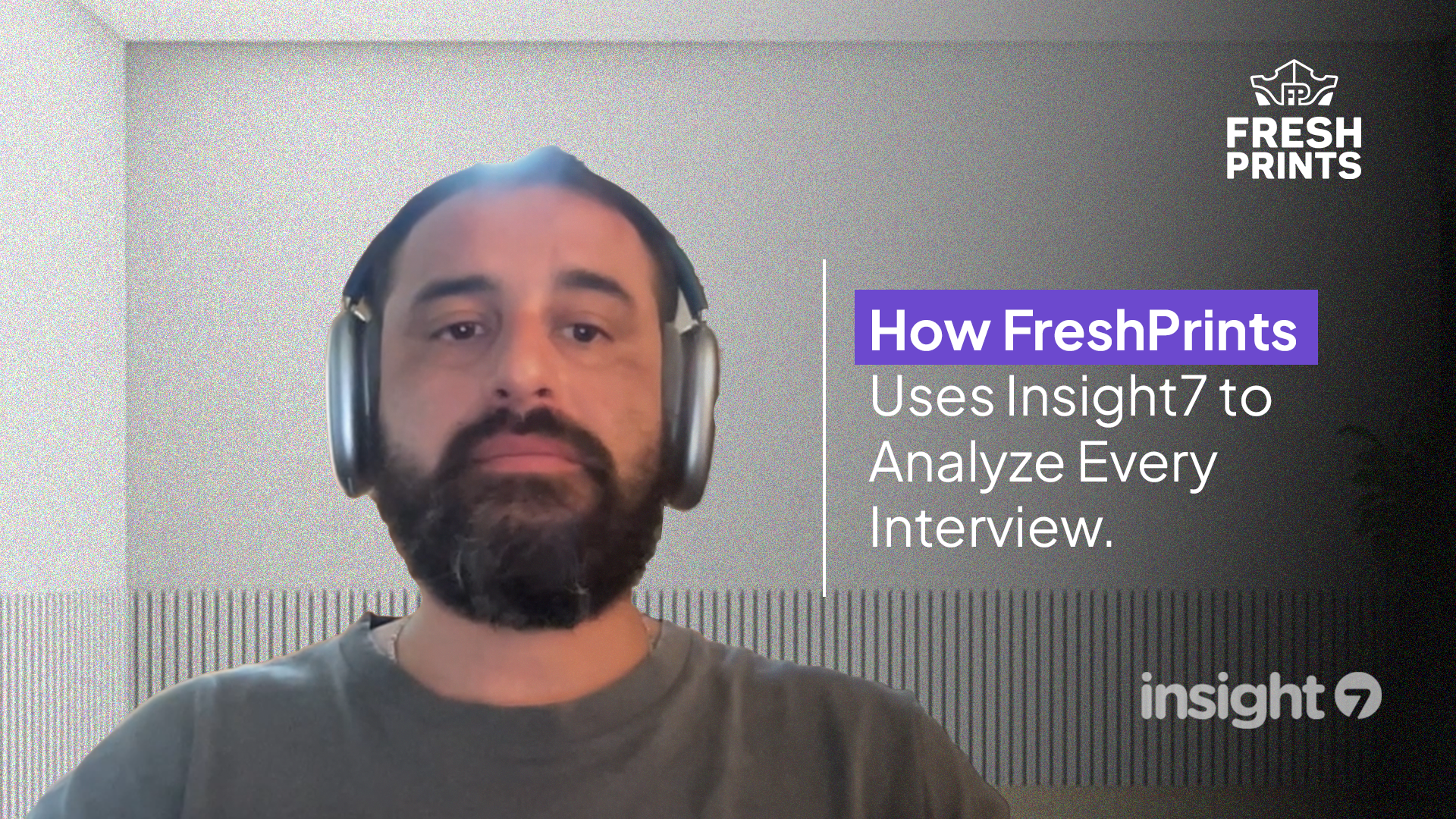Best Experiential Marketing Technology Tools 2024
-
Bella Williams
- 10 min read
In 2024, cutting-edge engagement solutions are revolutionizing the way brands connect with their audiences. As consumers increasingly seek meaningful experiences, businesses must adapt through innovative technologies and interactivity. By embracing advanced tools, marketers can create memorable moments that resonate deeply with their customers, enhancing brand loyalty.
These modern engagement solutions utilize a combination of virtual reality, augmented reality, and personalized communication to capture attention effectively. These strategies are not merely trends; they represent a fundamental shift in how companies approach experiential marketing. As 2024 unfolds, staying ahead of these advancements will be crucial for delivering the impactful experiences consumers crave.
Analyze & Evaluate Calls. At Scale.

The Rise of Cutting-edge Engagement Solutions in Experiential Marketing
The rise of cutting-edge engagement solutions in experiential marketing heralds a transformative era for brands seeking deeper connections with their audiences. As technology advances, marketers are increasingly adopting innovative tools that enhance customer interactions. These solutions offer unique and immersive experiences, elevating how brands communicate their messages and values.
Several factors drive this trend. First, consumers are now expecting personalized experiences that align with their individual preferences and needs. Brands that harness interactive digital displays or virtual reality platforms can create captivating environments that draw customers in. Additionally, the rise of AI-driven chatbots is revolutionizing communication, enabling brands to engage with their audiences in real time. This shift not only fosters brand loyalty but also helps businesses remain competitive in a rapidly evolving marketplace. Understanding and adapting to these cutting-edge engagement solutions is essential for brands looking to thrive in 2024 and beyond.
Embracing Technology for Enhanced Customer Interaction
Embracing technology is essential for enhancing customer interactions in today's dynamic marketplace. Cutting-edge engagement solutions are transforming how brands communicate with their audiences, offering tools that foster meaningful connections. Companies that adopt these technologies can better understand customer needs and preferences, thereby tailoring their offerings and strategies effectively.
One effective approach involves integrating immersive experiences through augmented and virtual reality. These technologies allow customers to engage with products in innovative ways, making the interaction more memorable. Another key solution is utilizing AI-driven chatbots, which facilitate personalized communication and provide immediate responses, enhancing customer satisfaction. Additionally, interactive digital displays can showcase dynamic content, keeping potential customers engaged and informed. By leveraging these technologies, businesses can create a seamless and enriched customer journey, ultimately driving loyalty and marketing success.
Maximizing Engagement through Immersive Experiences
Maximizing engagement through immersive experiences is increasingly vital in today's marketing landscape. From virtual reality to augmented reality, cutting-edge engagement solutions create opportunities for brands to connect meaningfully with their audiences. As consumers seek deeper interactions, leveraging immersive technologies transforms how they experience products and services, drawing them into a participatory role.
These immersive experiences allow brands to tell compelling stories, fostering emotional connections that traditional marketing cannot achieve. For instance, virtual reality can transport users to imaginative environments that showcase a brand's offerings in an engaging way. Similarly, augmented reality allows customers to visualize products in their own space, enhancing decision-making. Embracing these innovative tools not only meets consumer expectations but also drives loyalty and conversion, ensuring brands stay relevant in an ever-evolving market.
Extract insights from interviews, calls, surveys and reviews for insights in minutes
Top Tools for Cutting-edge Engagement in 2024
In 2024, understanding and utilizing the right tools for cutting-edge engagement solutions is essential for any business aiming to leave a lasting impression. The emphasis is on maximizing customer interaction through innovative technology, which opens up numerous avenues for brands to captivate their audience. Brands must approach experiential marketing with the intent to create meaningful connections, making the right technological choices pivotal for success.
Among the top tools shaping engagement, Virtual Reality (VR) platforms allow immersive experiences that transport users into different environments. Augmented Reality (AR) technologies elevate real-world interactions, blending the digital realm with physical spaces seamlessly. Additionally, interactive digital displays provide dynamic content that captures attention instantly. Finally, AI-driven chatbots enhance personalized communication, ensuring customer inquiries are met with tailored responses. These tools collectively foster a richer customer experience, reinforcing brand loyalty and driving engagement in 2024.
insight7: Revolutionizing User Insights
In the ever-evolving field of experiential marketing, revolutionizing user insights is paramount. Cutting-edge Engagement Solutions have emerged as vital tools for marketers seeking to understand their audiences better. These solutions enable brands to glean valuable insights from customer interactions, allowing for a more nuanced approach to marketing strategies. As companies gather more customer signals than ever, the ability to analyze and act upon this data swiftly is crucial.
One of the principal challenges organizations face is the inefficiency of traditional data analysis methods. Manually sifting through conversations and feedback is not only time-consuming but also hinders timely decision-making. By utilizing advanced insights tools, businesses can transform raw data into actionable strategies more efficiently. Furthermore, this new wave of engagement solutions fosters collaboration, ensuring insights are centralized and easily accessible. Embracing these innovations is essential for companies aiming to stay ahead of the competition and create memorable customer experiences.
Virtual Reality (VR) Platforms for Realistic Interactions
Virtual reality (VR) platforms are transforming the way brands engage with their audience, providing an immersive environment for realistic interactions. By harnessing this technology, brands can create experiences that allow users to connect deeply with products and services. This level of engagement fosters emotional connections, enhancing customers' understanding of brand offerings.
The potential of VR in experiential marketing lies in its capability to simulate real-world scenarios where consumers can interact with products in a lifelike setting. For instance, users may experience a virtual walk-through of a product’s features or engage in a gamified experience that promotes brand loyalty. As businesses continue to seek cutting-edge engagement solutions, VR platforms stand out as invaluable tools in crafting memorable experiences that drive customer awareness and satisfaction. Ultimately, these technologies not only enrich interactions but also elevate the overall marketing strategies brand implement in 2024 and beyond.
Augmented Reality (AR) Enhancements for Real-world Engagement
Augmented Reality (AR) brings a fresh dimension to real-world engagement, transforming how brands connect with their audiences. By integrating virtual elements into physical environments, AR creates interactive experiences that captivate users. This technology allows consumers to visualize products in their own space before making a purchase, significantly influencing decision-making processes.
Moreover, AR fosters deeper connections by encouraging participation and interaction. Brands can use AR applications for virtual try-ons or interactive product displays, enhancing customer engagement through playfulness and creativity. These cutting-edge engagement solutions not only boost brand awareness but also create memorable experiences that resonate with consumers. As businesses adopt AR into their marketing strategies, the potential for increased customer loyalty and sales becomes evident. Thus, AR stands out as a pivotal enhancement in experiential marketing, providing dynamic ways for brands to engage with their audiences in the real world.
Interactive Digital Displays for Dynamic Content Delivery
Interactive digital displays play a crucial role in creating dynamic content delivery. These displays offer engaging visuals that capture audience attention while providing valuable information. By integrating interactive elements, marketers can transform passive viewers into active participants in their brand story. This two-way engagement fosters a deeper connection between the audience and the brand, enhancing the overall customer experience.
Moreover, these displays can be tailored to reflect real-time updates, promotions, or personalized messages. As technology advances, incorporating features like touch interactivity or gesture recognition can further enhance user interaction. This adaptability is essential for brands aiming to maintain relevance in an ever-changing market landscape. In this way, interactive digital displays represent a significant aspect of cutting-edge engagement solutions that empower brands to effectively deliver their message and resonate with their audiences.
AI-driven Chatbots for Personalized Communication
AI-driven chatbots are transforming the way brands engage with customers, creating personalized communication channels that resonate with individual preferences. These chatbots, powered by advanced artificial intelligence, can analyze vast amounts of data to deliver tailored messages and recommendations. By understanding customer behavior and past interactions, brands can enhance user experience and establish deeper connections.
The effectiveness of these cutting-edge engagement solutions lies in their ability to respond in real-time, offering instant support and personalized content. From providing product suggestions based on user queries to facilitating 24/7 customer service, AI-driven chatbots are indispensable. As they learn from each interaction, these systems become more efficient, ensuring that every engagement feels distinct and relevant. Implementing AI chatbots not only streamlines communication but also fosters loyalty by delivering experiences that feel uniquely crafted for each user.
Conclusion: Embracing the Future with Cutting-edge Engagement Solutions
Embracing the future means understanding the importance of cutting-edge engagement solutions that enhance customer experiences. As we explore the best experiential marketing technology tools for 2024, it's clear that adapting to new advancements is essential for success. These solutions empower brands to connect with their audiences in innovative ways, fostering deeper relationships through tailored interactions.
The landscape is rapidly evolving, and the ability to adapt to these changes is critical. By investing in cutting-edge engagement solutions, businesses can streamline their processes, better understand customer needs, and ultimately drive more impactful results. This journey toward embracing advanced technology not only enhances engagement but also positions companies ahead of the competition in a dynamic marketplace.







